|
July 2024, Nikon Kenkyukai 3
|
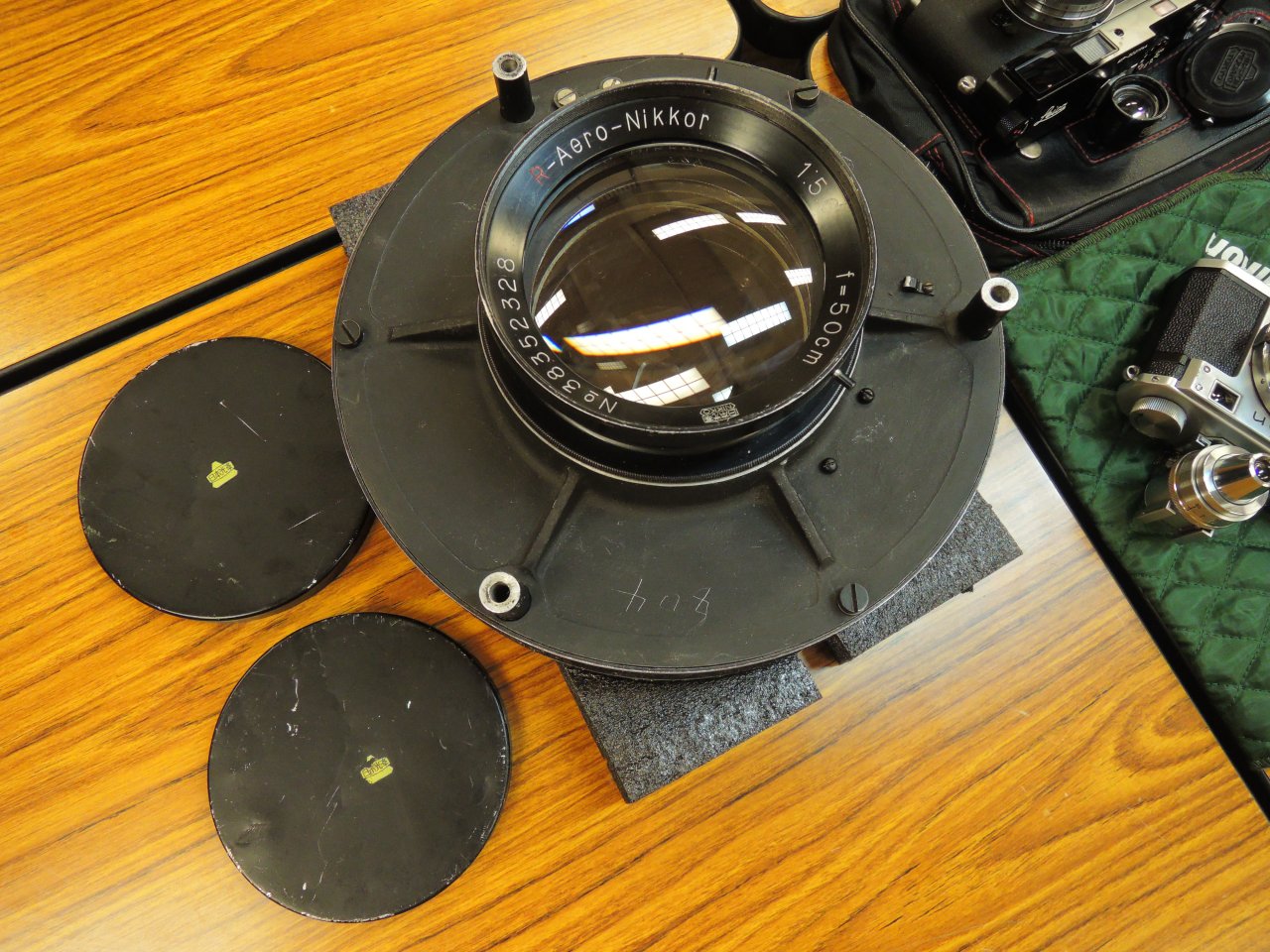
R-Aero Nikkor 50cm F5.6
R-Aero Nikkor 50cm F5.6
This historic large Nikkor lens made its first appearance at the Tokyo Meeting.
Its name is R-Aero Nikkor 50cm F5.6.
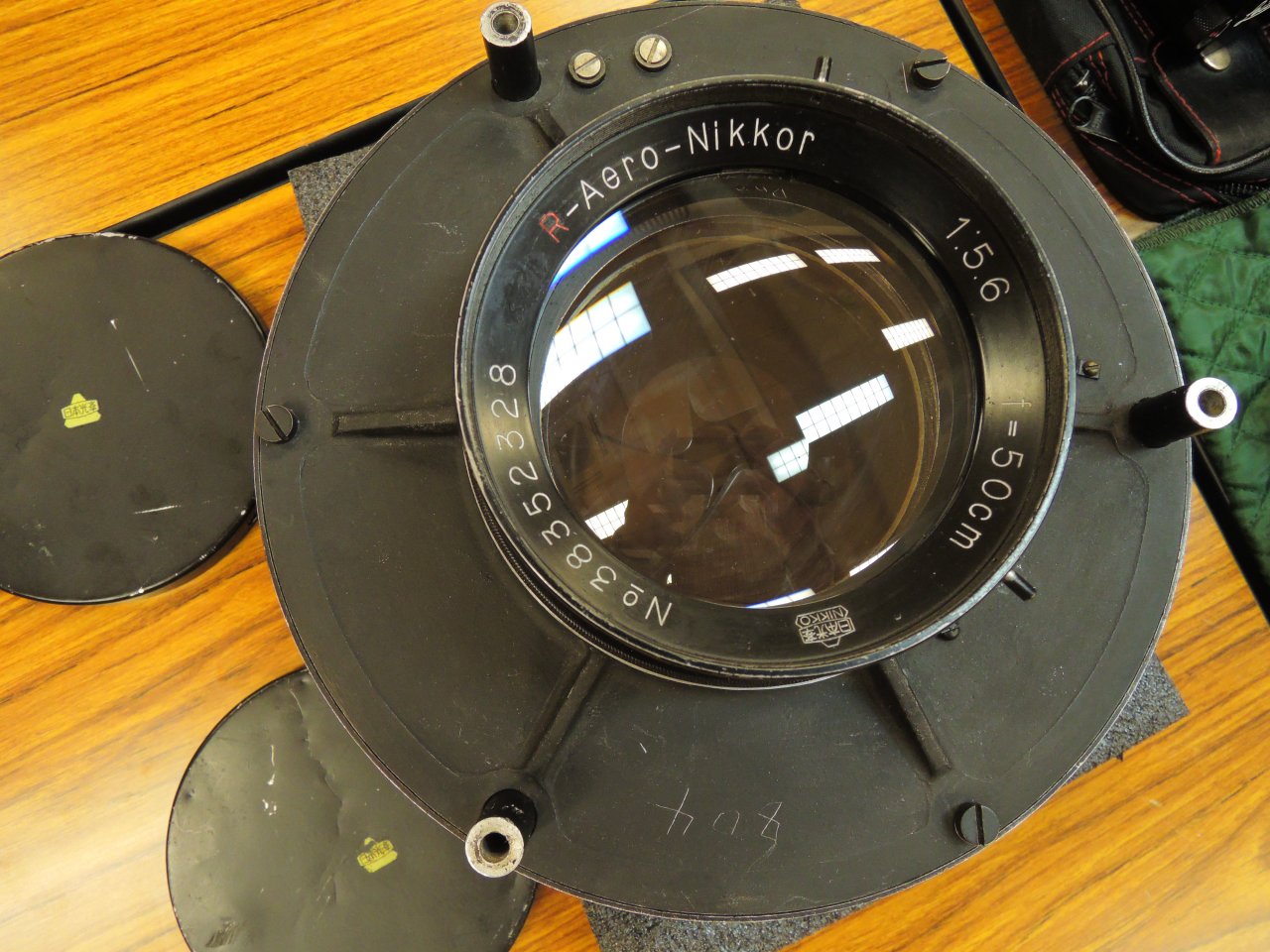
A Lens for the Second Version of the First Automatic Aeronautical Camera
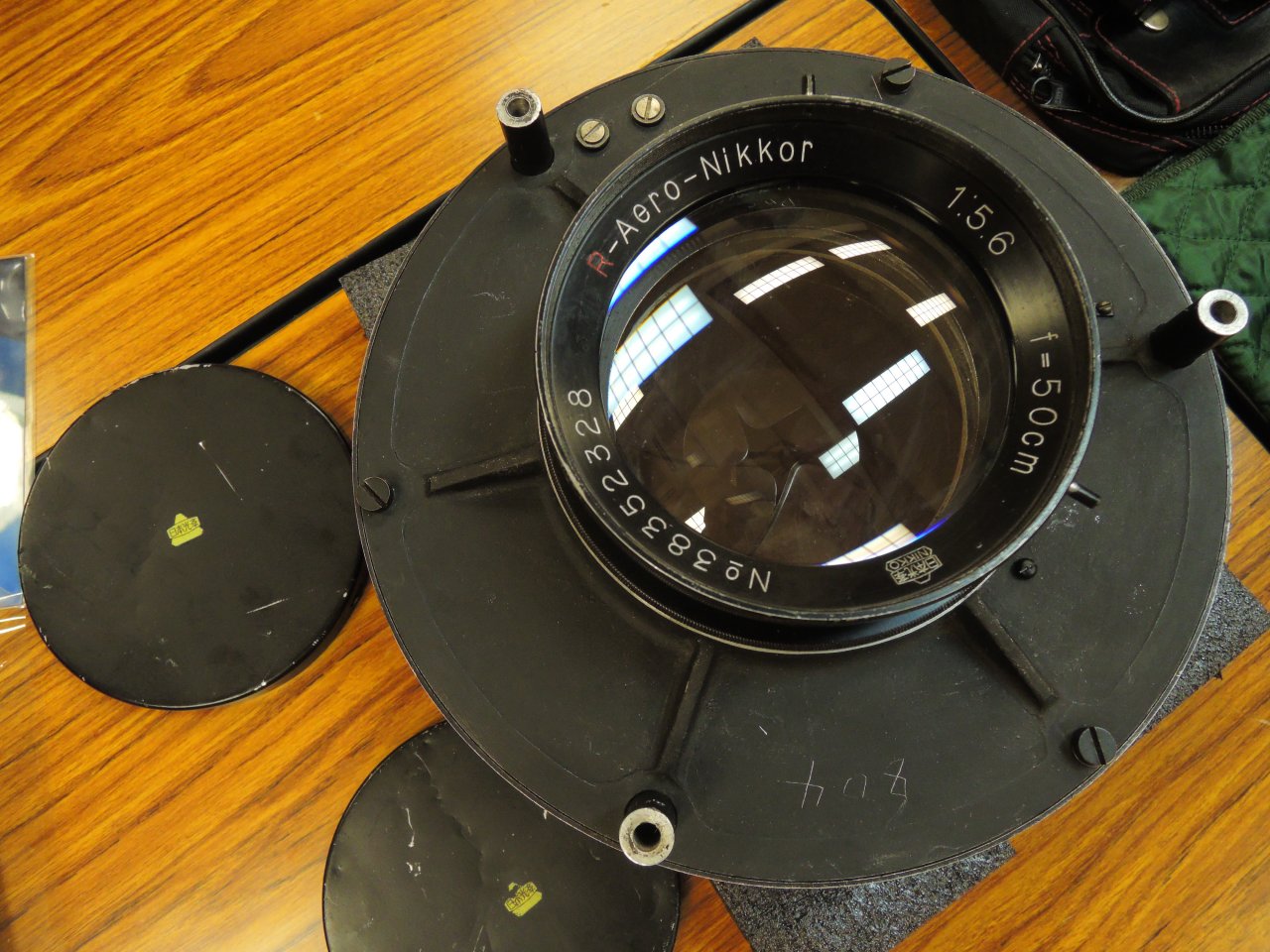
Showa 19 (1944)
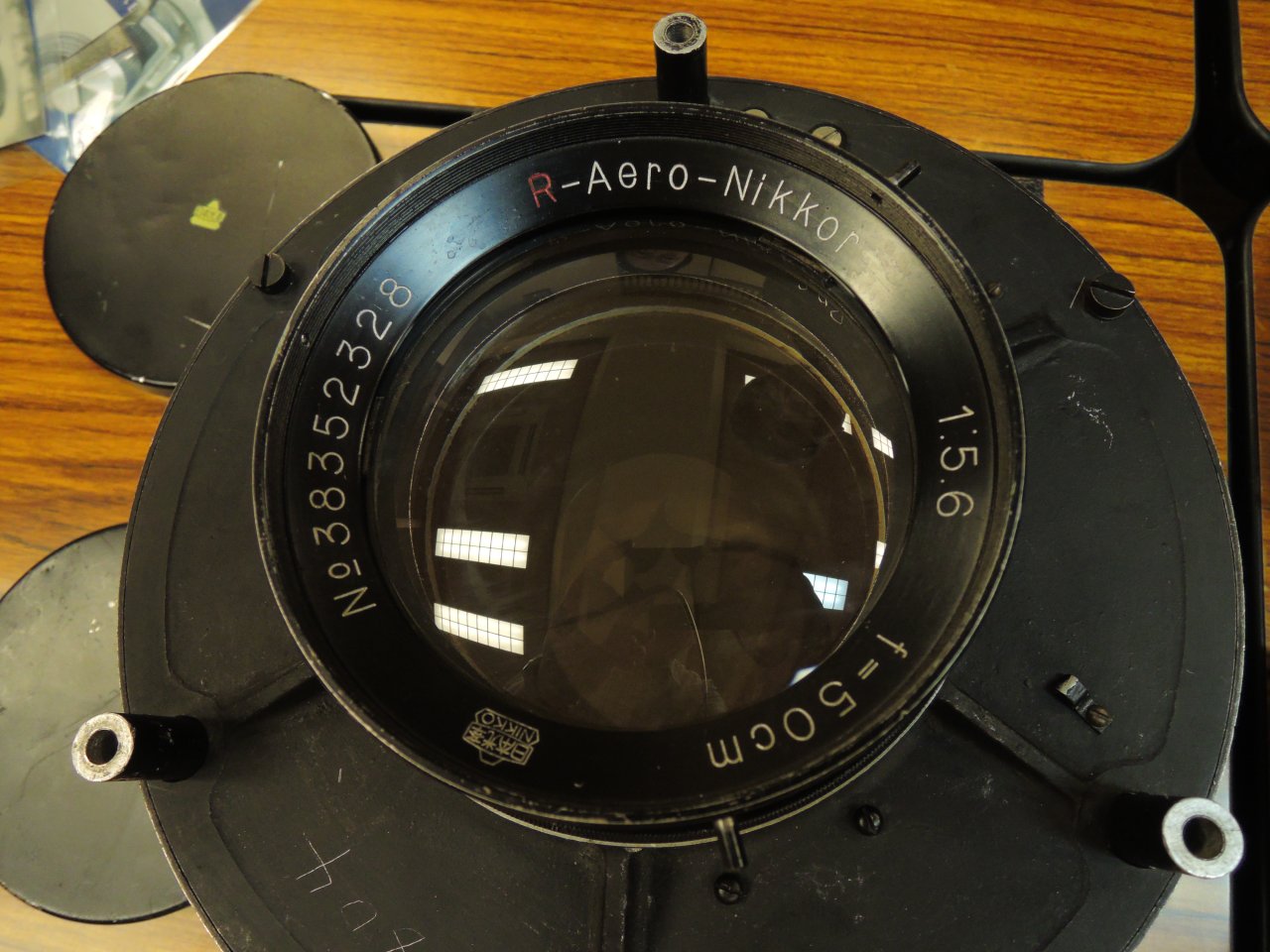
50cm F5.6
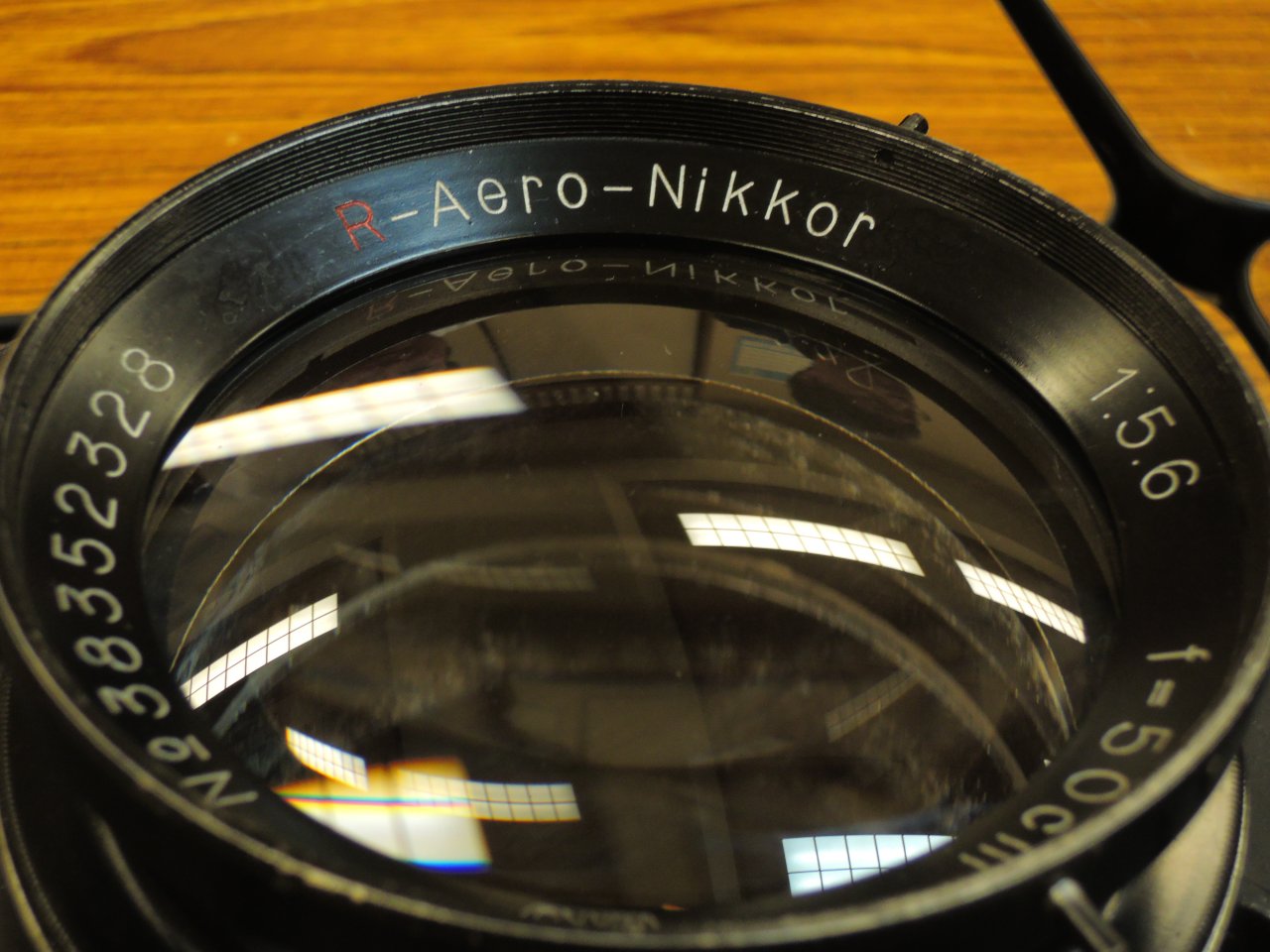
Gorgeous Front View of the Lens
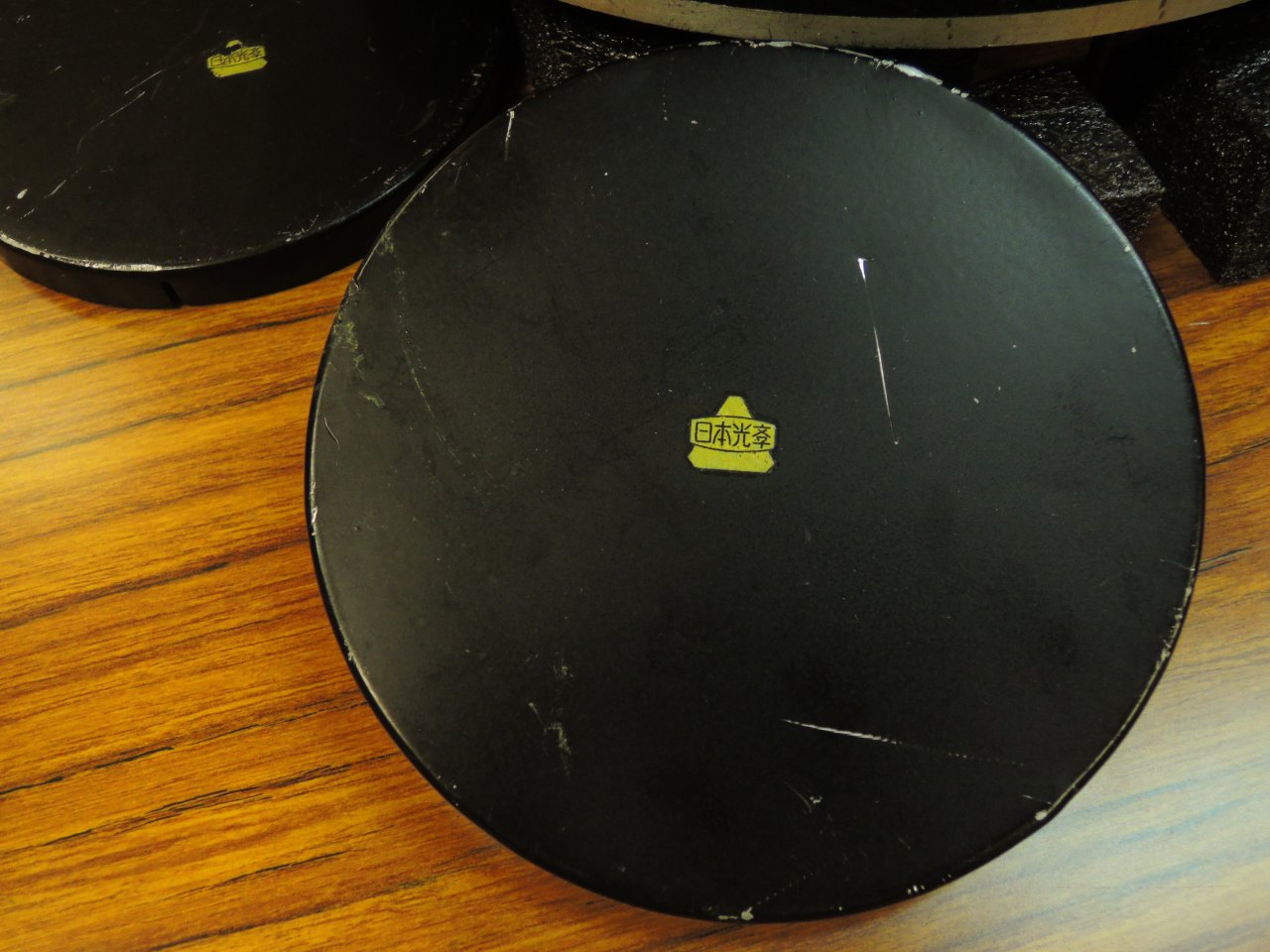
Nippon Kogaku
Read Nikon's Company History
In order to study the R-Aero Nikkor 50cm F5.6, I decided to read Nikon's primary sources.
I carefully examined Nikon's company history, starting from the most recent:
the 100-year history, the 75-year history, the 50-year history, and the 40-year history.
Some explanations were published in the 40-year history and 75-year history.
(1) The History of the Nikon 40 Years, 1960
|
50cm F5.6 Image size 24cm x 18cm
This is a Tessar-type aerial photography lens that was designed around 1937 and was the most numerous,
with 1,500 units produced until just before the end of the WWII.
This lens is for use with the Second Version of the First Automatic Aeronautical Camera.
Quoted from page 527
|
|
(2) The History of the Nikon 75 Years, 1993
|
the Second Version of the First Automatic Aeronautical Camera
was produced at the Kawasaki Plant from 1944 onwards for use in large aerial camera systems.
This was a reconnaissance camera that had already been produced by other companies since around 1934,
but Nippon Kogaku improved it and took over production at the order of the military.
To keep the size of the photographs constant,
lenses with different focal lengths are needed depending on the aircraft's flying altitude.
However, due to the need to increase production,
it was narrowed down to just one type, the 50cm F5.6 (for altitudes of 10,000m).
This camera was fully automatic, with a motor controlling everything from exposure to film winding,
and 600 units were produced in the year leading up to the end of the war.
Quoted from page 78
|
|
Nikon Museum
To learn more about this historic lens, please see the exhibition at the Nikon Museum.
These images are from the special exhibition "Special Collection 2"
held from September 29, 2020 to February 27, 2021.
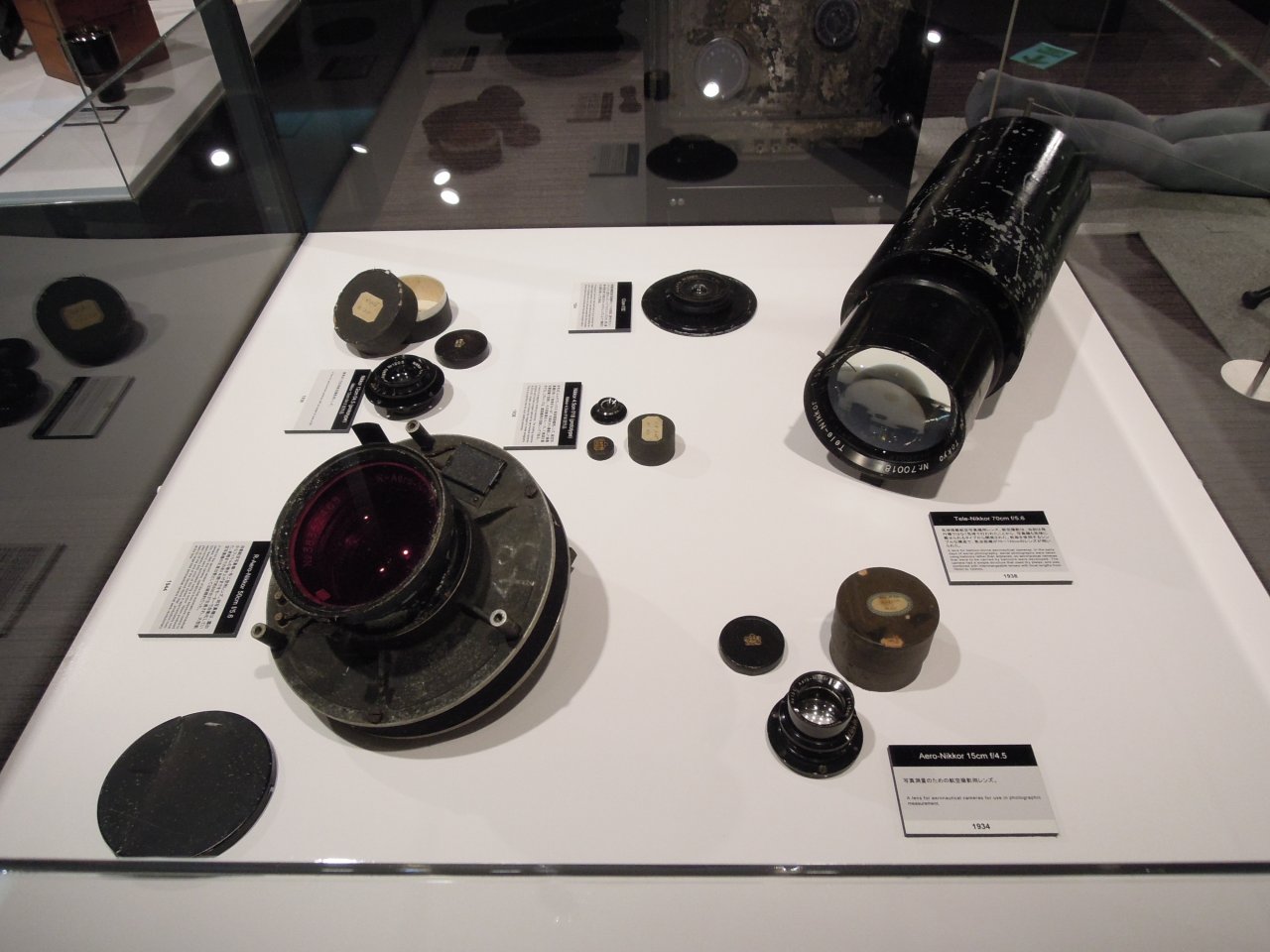
Nikon Museum Special Collection 2
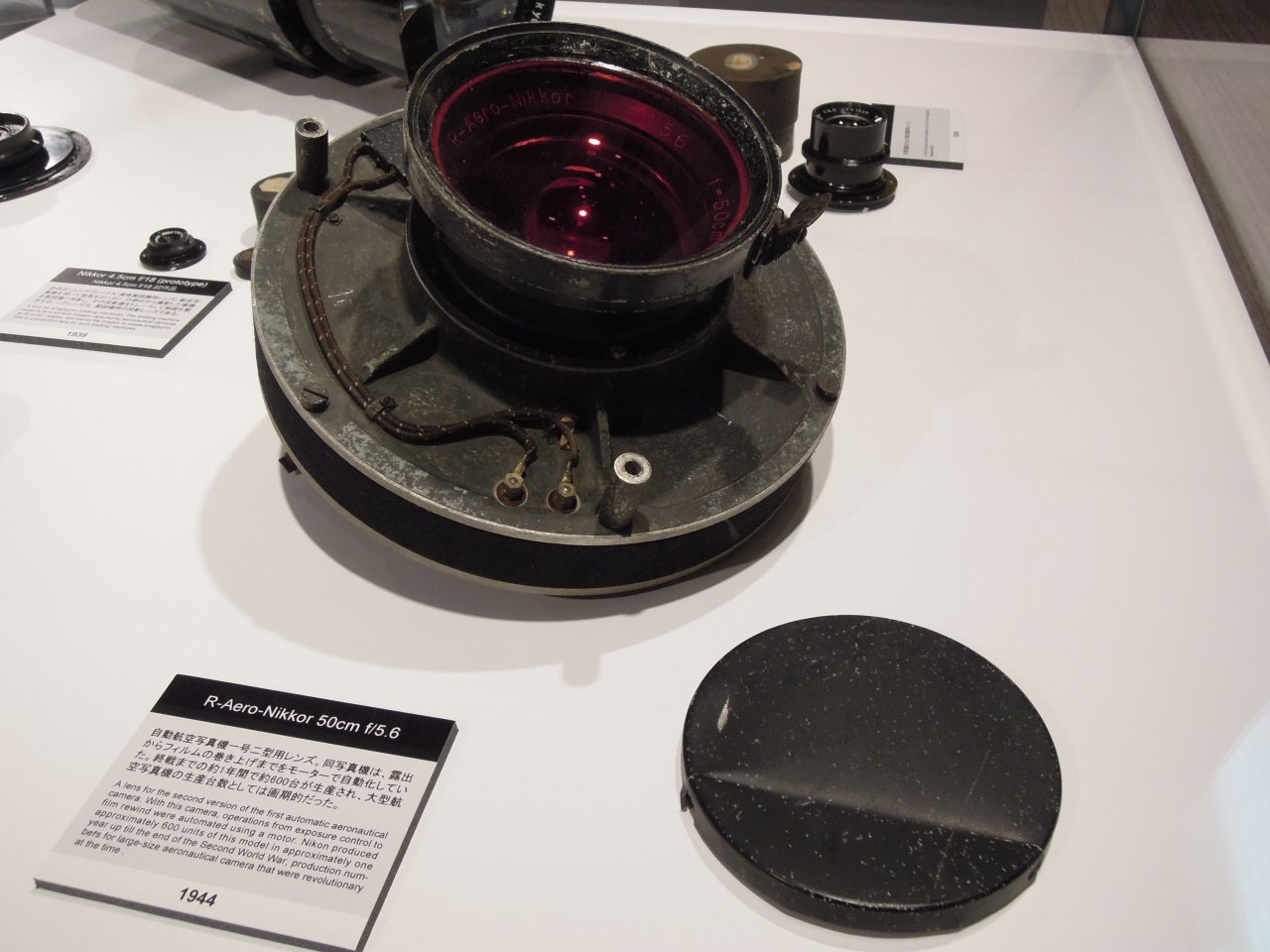
R-Aero-Nikkor 50cm f/5.6
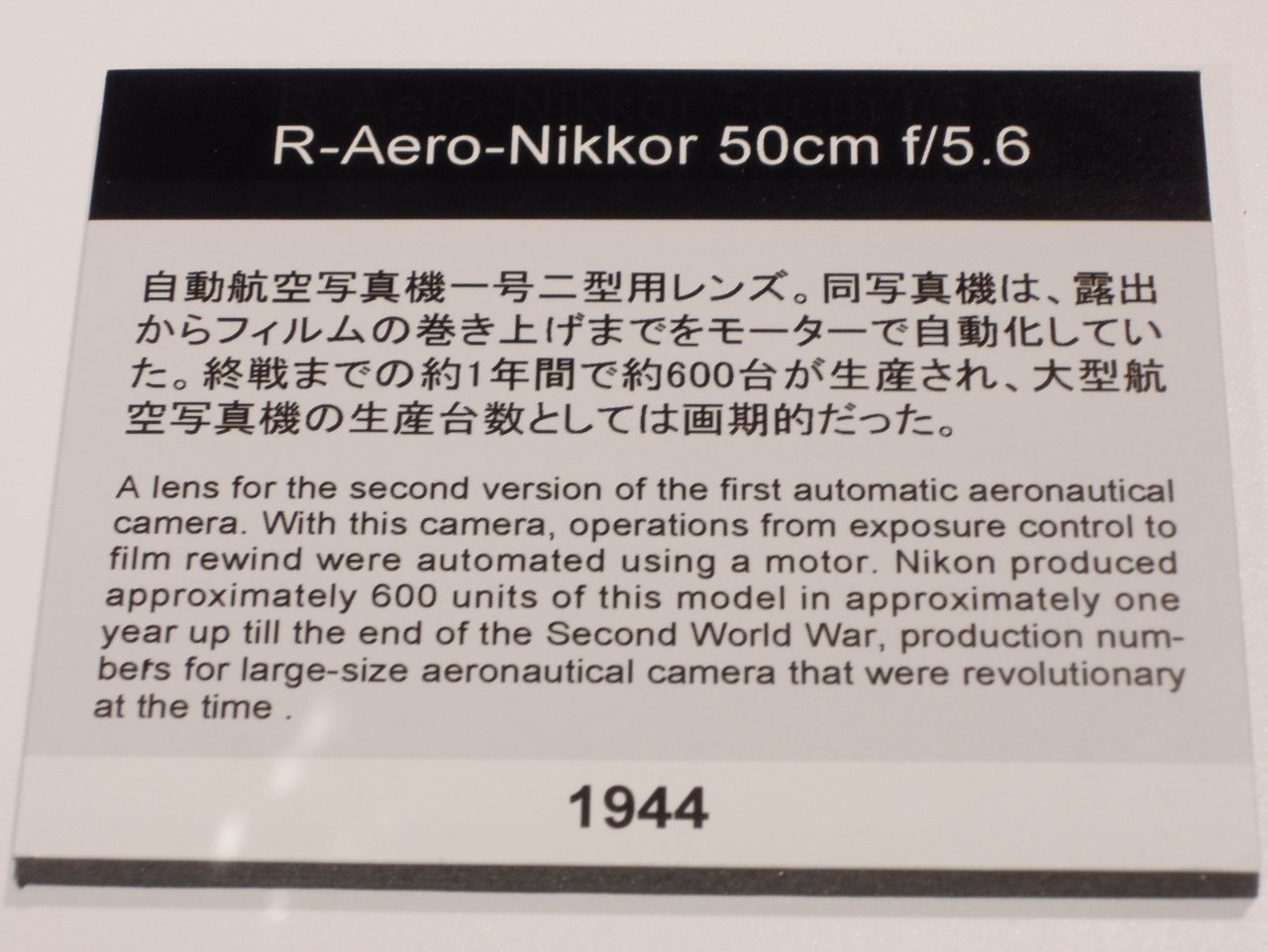
Explanation Panel
|
R-Aero-Nikkor 50cm f/5.6
A lens for the second version of the first automatic aeronautical camera.
With this camera, operations from exposure control to film rewind were automated using a motor.
Nikon produced approximately 600 units of this model in approximately one year up till the end of the Second World War,
production numbers for large-size aeronautical camera that were revolutionary at the time.
1944
|
|
I thought the explanatory panel at this Nikon Museum was inappropriate.
To summarize the explanations of Nikon's 40-year history and 75-year history, there are two important points to note:
- Designed around 1937, a total of 1,500 were produced until just before the end of the WWII
- Mass production began in 1944, and approximately 600 were produced in the year leading up to the end of the WWII
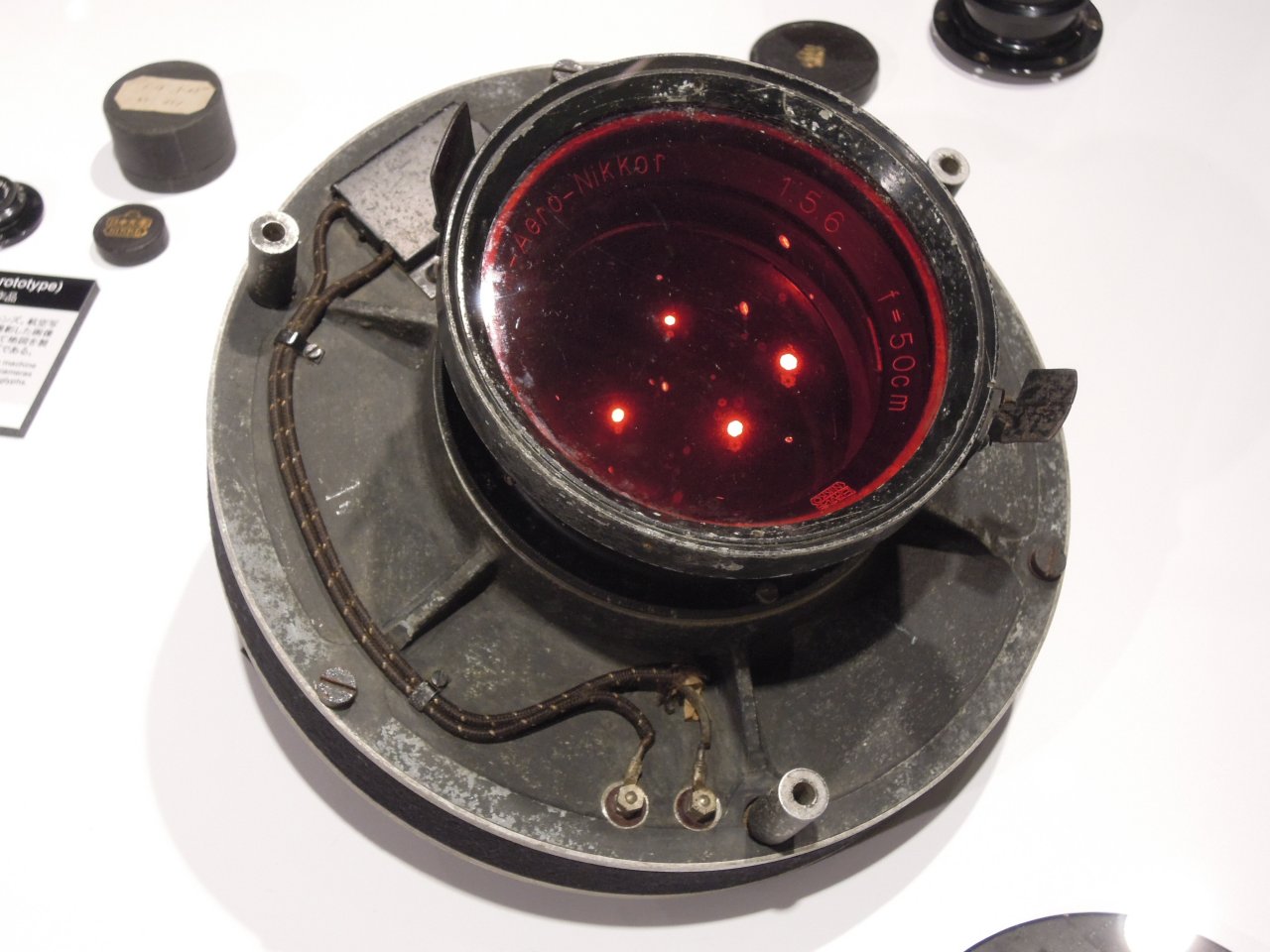
R-Aero-Nikkor 50cm f/5.6
Martin's Restoration Project
Martin Moravcik carried out a full restoration of the R-Aero-Nikkor 50cm F5.6 lens.
Please see his article on the restoration.
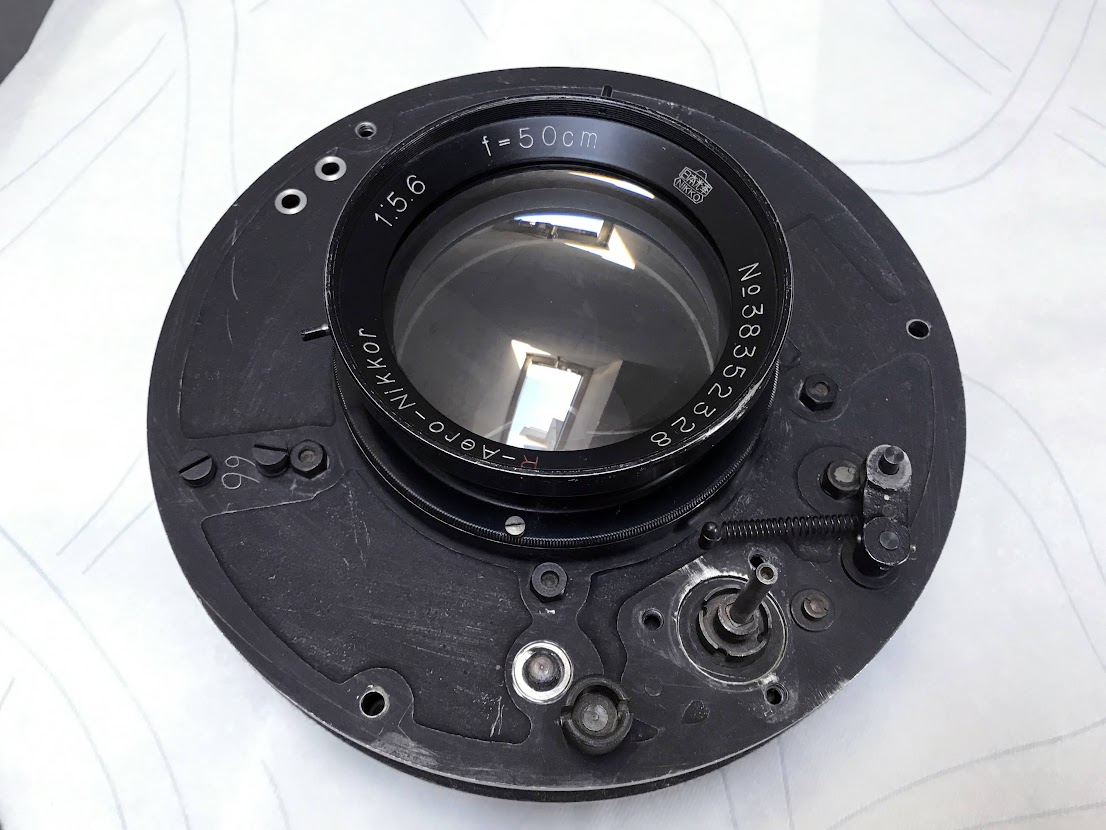
Condition Before Restoration
Photo: Copyright (c) 2024, Martin Moravcik, All Rights Reserved.
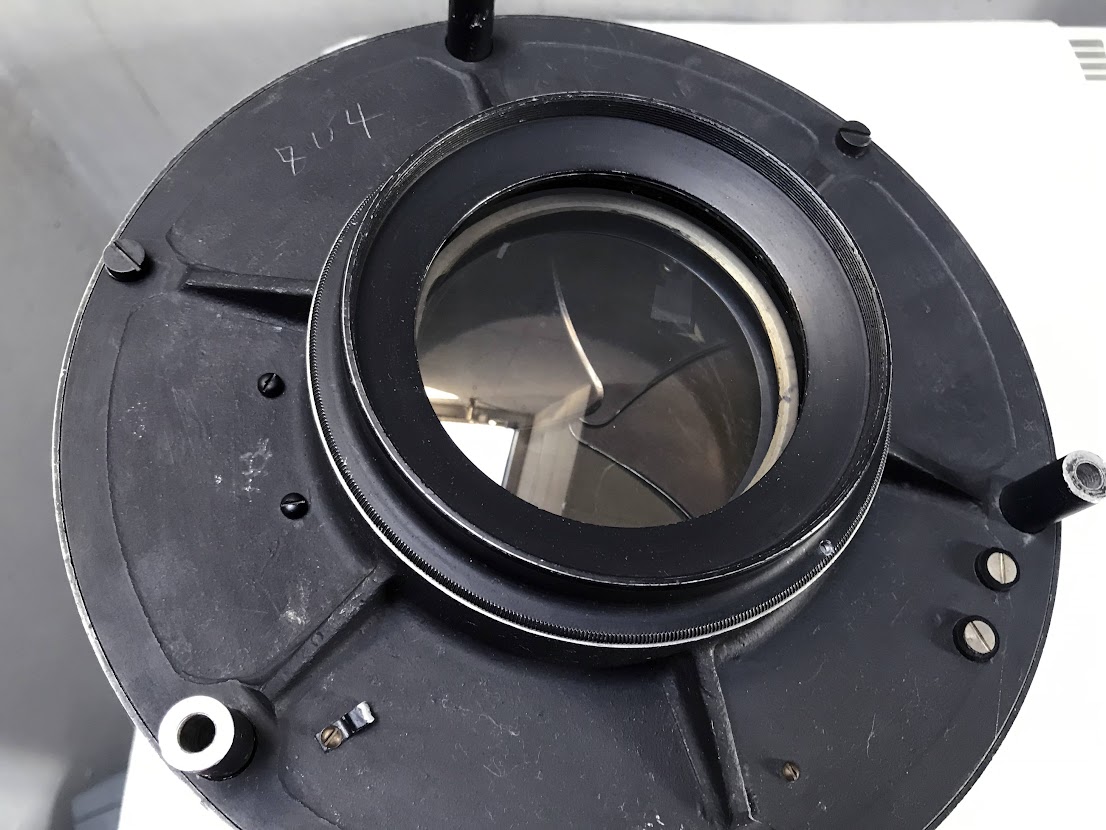
Rear Lens
Photo: Copyright (c) 2024, Martin Moravcik, All Rights Reserved.
Restoration project for a Japanese Collector
R-Aero-Nikkor 50cm F5.6
38352328 - marked NIKKO
by Martin Moravcik
Hello to the members of Nikon Kenkyukai and visitors to its website.
I am delighted to have the opportunity to discuss a special restoration project of a historically significant vintage Nikkor lens.
One of the very few 50cm R-Aero-Nikkor lenses, survived the WWII.
Development of 50cm Nikkor finished around 1937 with roughly 1500 lenses produced.
50cm f5.6 Aerial lens is mentioned in Nippon Kogaku 40th Anniversary book.
This particular lens was found by collector in Canada in Seatle in 1990.
It was then stored for over another 30+ years in great collection,
but in humid conditions which affected the lens surfaces badly.
On the home trip back to Japan, lens landed shortly in my hands for cleaning and gentle restoration.
Lens is about 4.5 inches in diameter and is fitted in cast aluminum housing that is 9 inches wide.
Housing fits aeroplane mount and has remote control of the shutter assembly that is part of the outfit.
Height of the set is 5 inches.
Lens is 4 element uncoated Tessar type with an image size of 24x28cm.
R-marks indication that this lens could be used for infra red photography.
Right in the middle of the lens, between optical elements, there are five black shutter blades,
that could be operated via the outputs on the aluminum housing.
R-Aero-Nikkor 50cm lens was designed for military use and was never available for general market.
This unique lens is also presented in 100th Anniversary book (Nikon - 100 Anniversary, November 2016) written by Uli Koch.
I have seen only few of these 50cm lenses and 4 ended up in my restoration lab.
It is possible that less then dozen of these war history warriors exist till today.
One of them is in new Nikon Museum in Saint-Bonnet-de-Mure near Lyon, France.
|
|
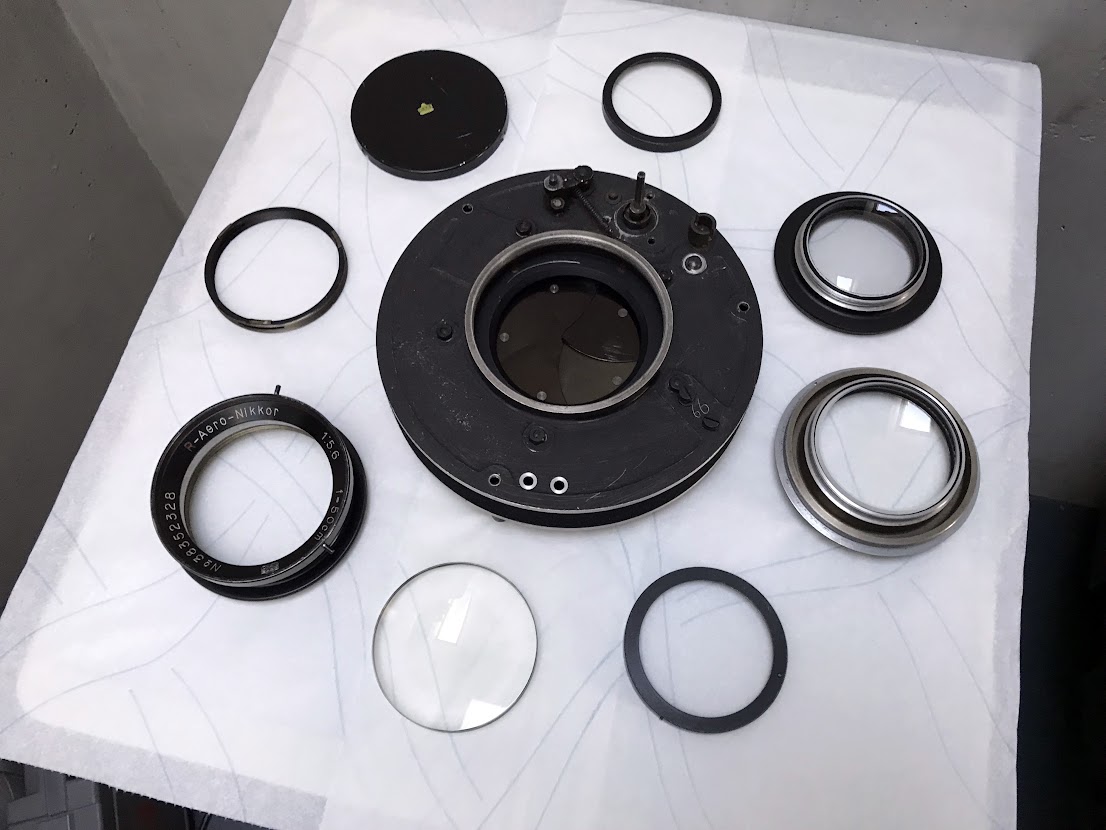
Lens Unit Under Restoration
Photo: Copyright (c) 2024, Martin Moravcik, All Rights Reserved.
|
This particular lens came in condition that was "normal" considering the age of almost 85 years.
The worst part were the glass elements with some dull areas and also traces of fungus inside.
Many years of humidity intervention,
as well as bad storage caused this old warrior to be quite stiff and not willing to release its body parts for any movement.
As already mentioned in previous restoration projects, dismantling of historical lenses is a true battle.
One does not want to damage the fragile surfaces and also has to convince the restoration guest to cooperate.
Early painted surfaces are super delicate and any harsh movement can make a total destruction.
It is necessary to use release oil and be sure to have a good penetration into the screw mount areas,
which usually takes some resting and waiting time.
It is better to leave it for day or more, so the oil gets into the "welded" areas.
If this does not work and the piece does not show any possible movements,
you have to try heating with pistol, but do it gently and make sure, you do not overheat the surface area of the paint.
In any case one needs tons of patience and if you are getting nervous,
it is better to put it aside and leave the restoration for later.
After dismantling the whole lens and cleaning the fungus from the optical elements,
it was quite clear to me, that the glass surface is has marks and without polishing it will never get the right light permeability.
For the polishing i used cerium oxide abrasives,
which could be obtained by glass polishing companies or sometimes available in the car accessories stores.
Polishing needs a lot of time and it is better to do it by hand and not use any electrical tools.
Cleaning of the metal rings and other body had to be done with soft cleaning approach and only "soap" based cleaning tissues or liquids.
No dissolvents or any alcohol based cleaners !
Old Nippon Kogaku paint is quite fragile and one has to be extremely gently in any direct surface contact.
I used brushes mostly and some areas were wiped with cleaning tissues only.
Most enjoyable part of restoration process,
is to assemble all restored and cleaned pieces back and inhale the aesthetical freshness of the reborn crown lens.
Successful project brings always nice feelings and awaitings for the new adventures to come.
Lens was then packed with a lot of protection and sent to its final home in Japan.
Arrived well and the new owner was extremely pleased with the beauty of this optical masterpiece.
Several photos show original condition before restoration, after disassembly,
after cleaning and finally the restored and reborn 86 year old optical jewel.
Please enjoy the journey into the optical history and restoration enchantment.
|
|
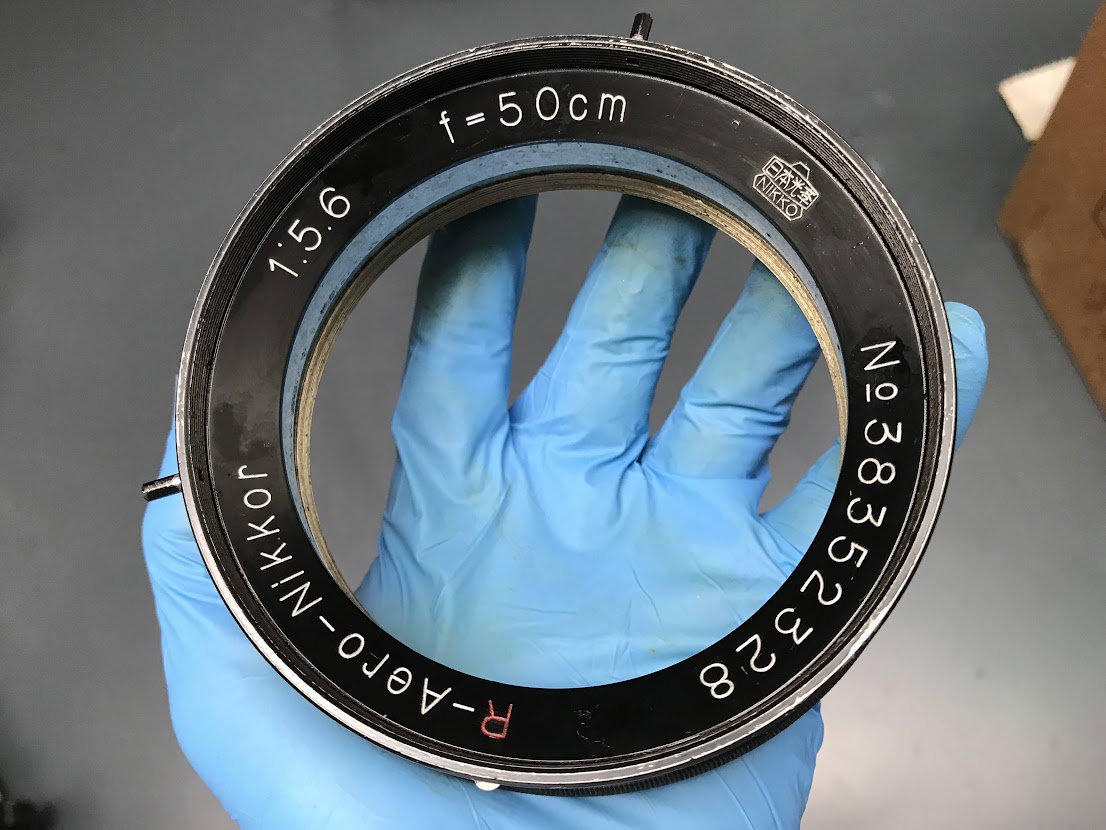
Lens Face
Photo: Copyright (c) 2024, Martin Moravcik, All Rights Reserved.
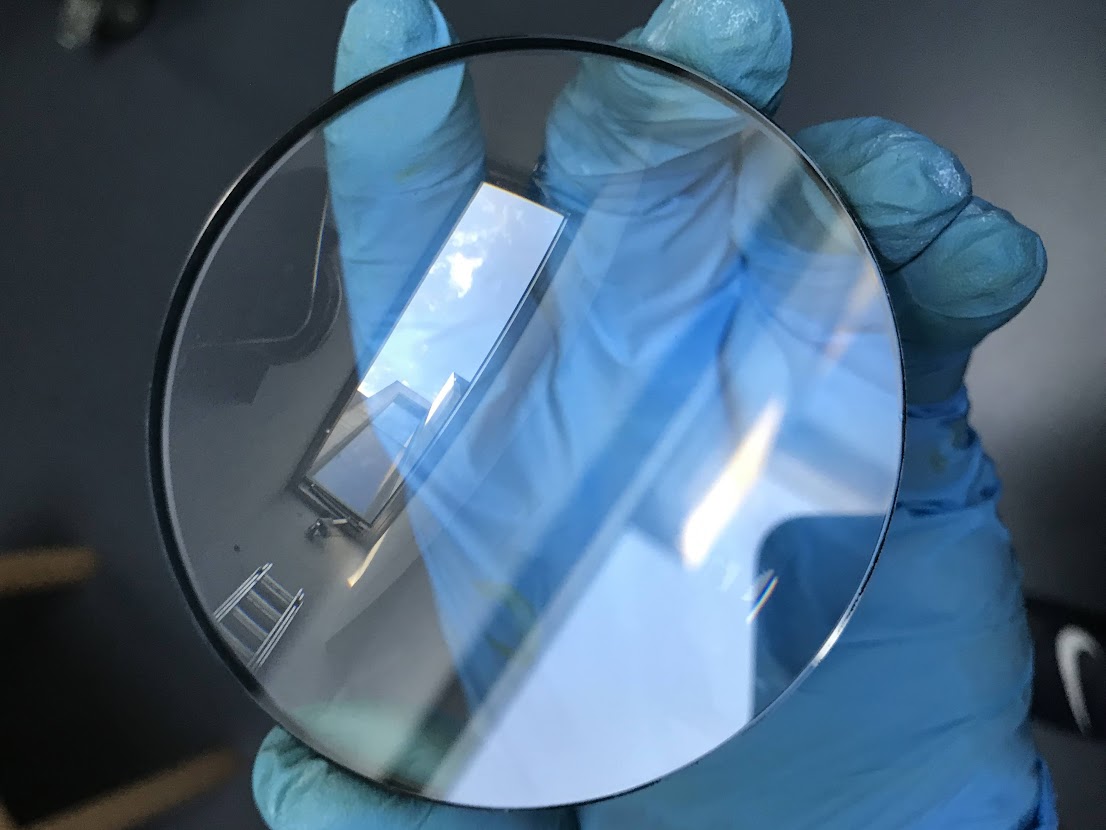
Cleaned Lens
Photo: Copyright (c) 2024, Martin Moravcik, All Rights Reserved.
Martin Collection
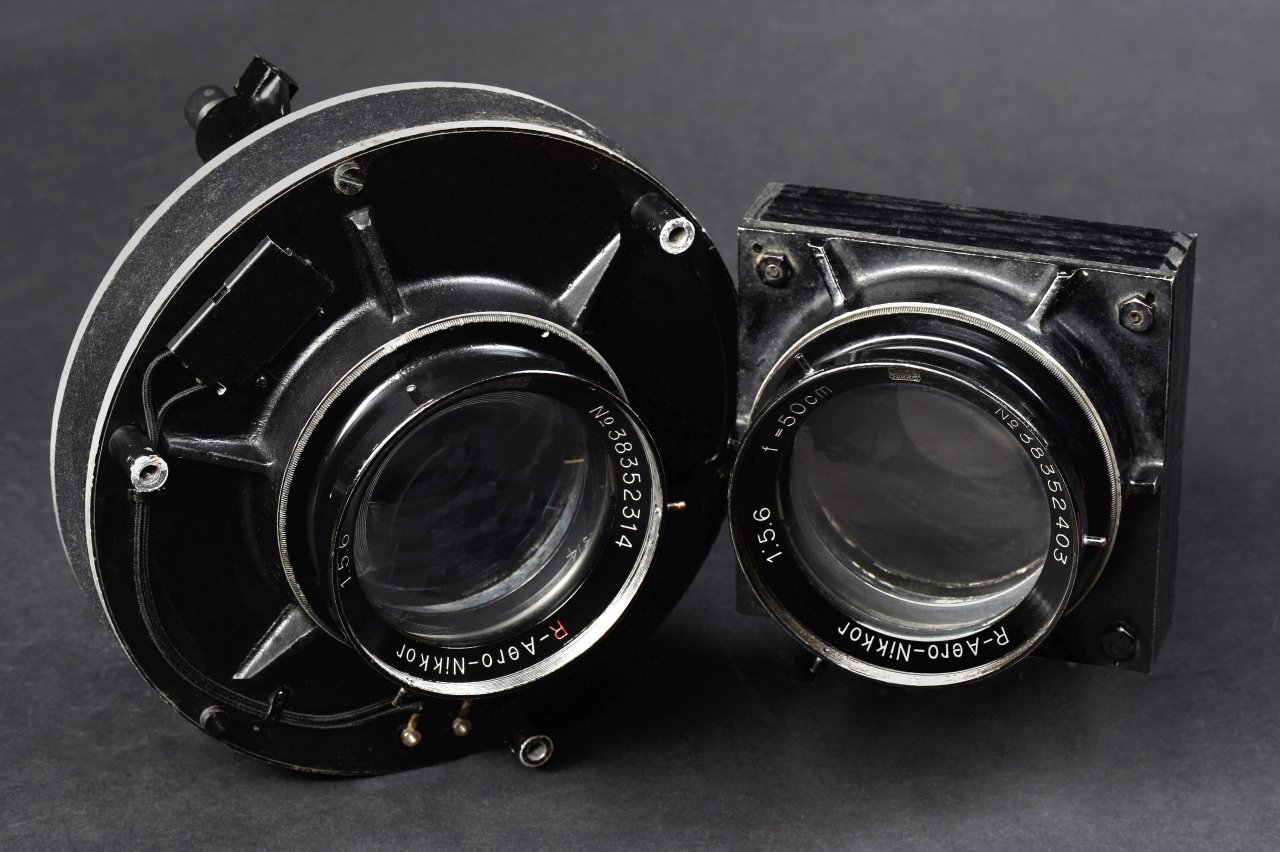
Martin Collection
Photo: Copyright (c) 2024, Martin Moravcik, All Rights Reserved.
Return to Japan
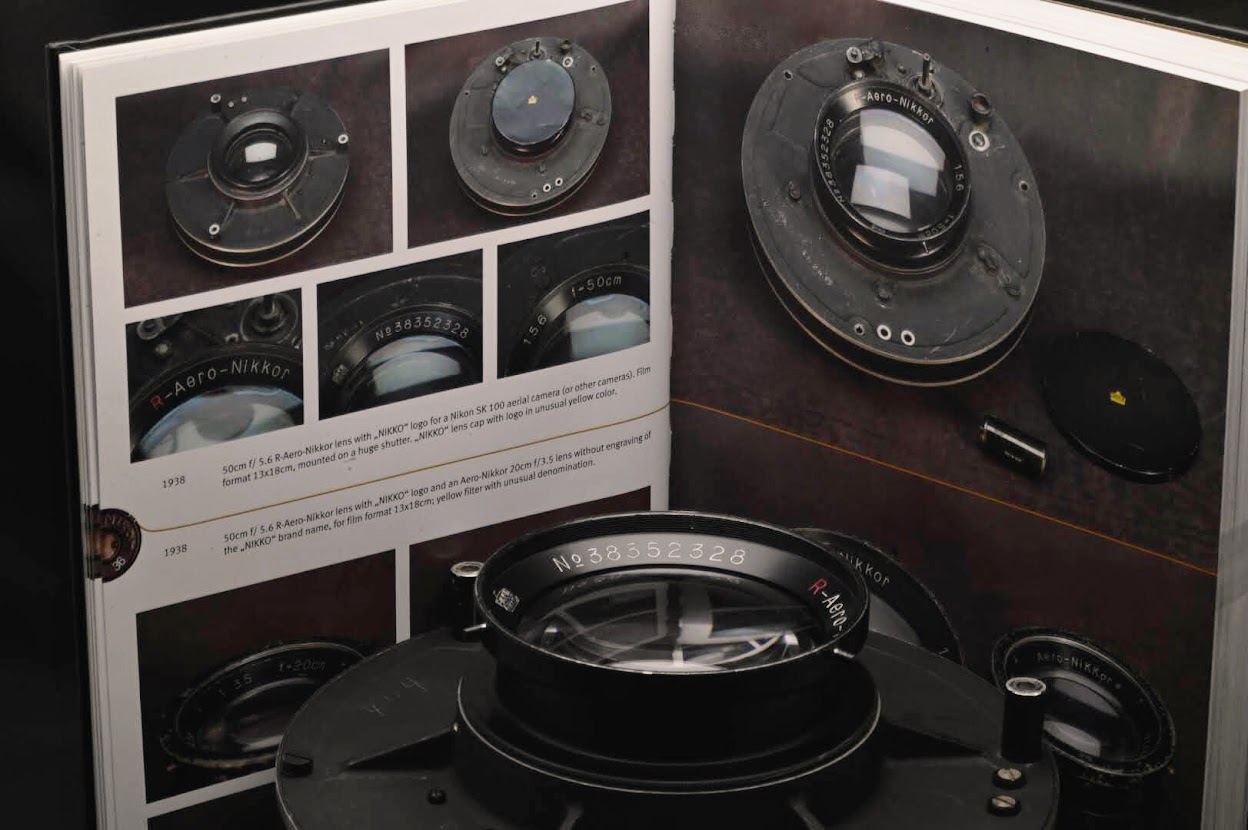
Uli Koch Book and R-Aero Nikkor
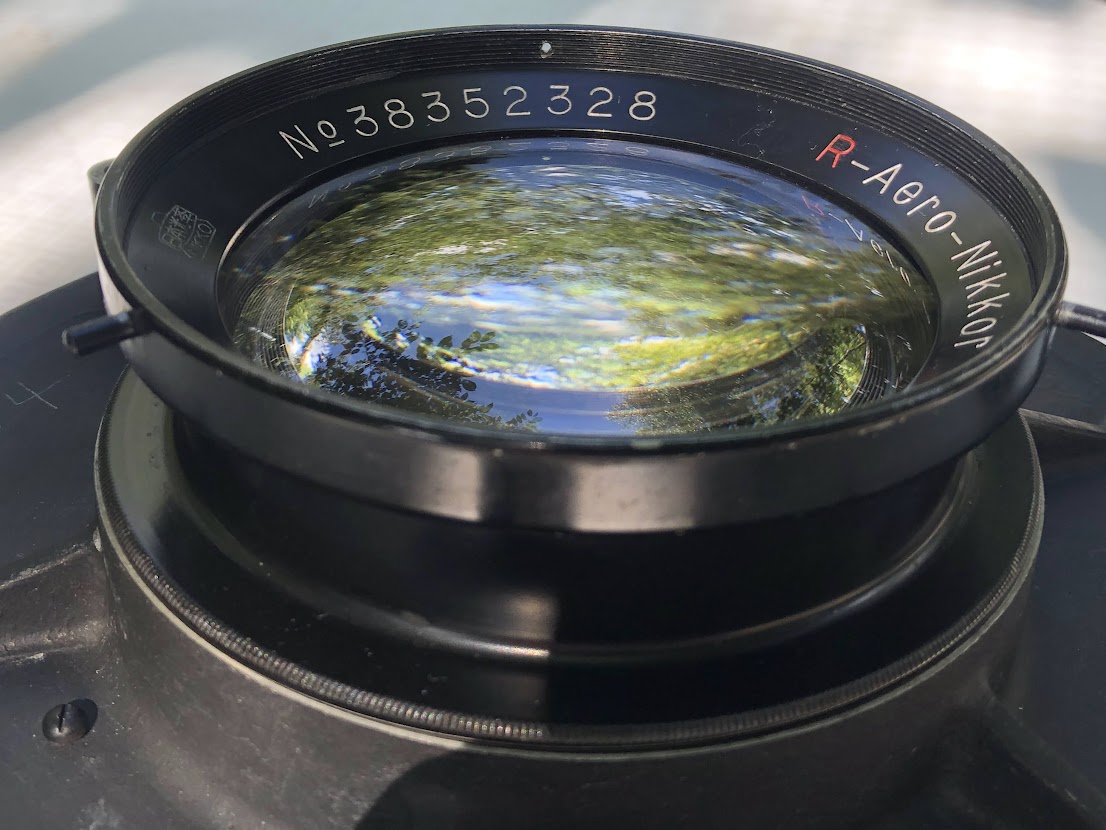
Return to Japan
Next Page Articles
→ Return to
Chapter 0
Top Page
Shortcuts
Chapter 0
Top Page
Chapter 1
Nikon I Legend
Chapter 2
Nikon S2 Black
Chapter 3
R-Aero Nikkor 50cm F5.6
Return to the top page of Nikon Kenkyukai
Copyright Michio Akiyama, Tokyo Japan 2024
|

















